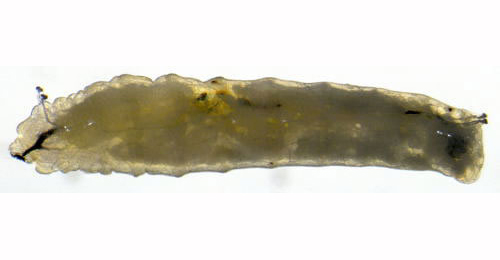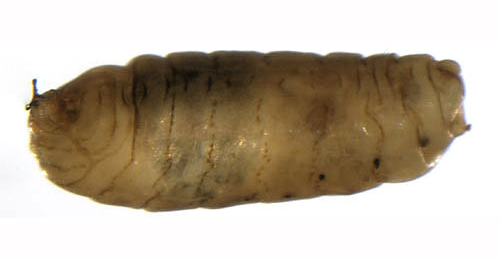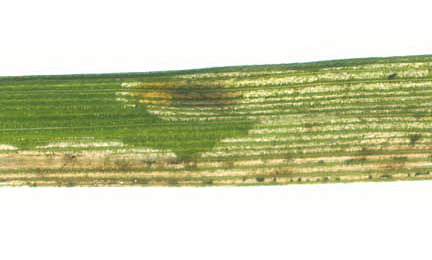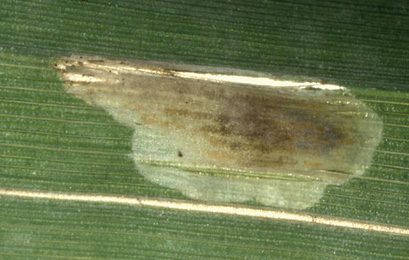|
||||||
|
GAUDINIA. French Oat-grass. [Poaceae] |
|
French Oat-grass (G. fragilis) is the only species of Gaudinia recorded in Britain. Three British miners are recorded on Gaudinia. A key to the European miners recorded on Gaudinia is provided in Bladmineerders van Europa. Nearly 100 British miners or possible miners are recorded on grasses in Britain. It is recommended that adults of all miners on grasses be reared to be certain of their identity. |
Key for the identification of the known mines of British |
1a > Leaf-miner: Long, narrow, whitish mine. Pupation internal (Spencer, 1976: 453); anterior spiracles projecting through the epidermis. Whitish, upper-surface, rather narrow corridor with comparatively large frass grains that are laying further apart than their diameter. Pupation within the mine. The anterior spiracles of the orange-brown puparium penetrate the epidermis. |
 Chromatomyia nigra larva, lateral Image: © Willem Ellis (Bladmineerders van Europa) |
 Chromatomyia nigra pupa, lateral Image: © Willem Ellis (Bladmineerders van Europa) |
|
Chromatomyia nigra (Meigen, 1830) [Diptera: Agromyzidae]. |
1b > Leaf-miner: A narrow whitish linear mine, running down the leaf from the apex, with frass in two rows of separate grains. Pupation external (Spencer, 1976: 246). Narrow corridor from start to end, whitish, uppper- or lower-surface, genarally running downwards. Mine often along the leaf margin. Frass in distict grains of regular size, alternating along the sides of the corridor. Pupation outside the mine. |
 Mine of Liriomyza flaveola on Festuca gigantea Image: © Willis Ellis (Bladmineerders van Europa) |
|
Liriomyza flaveola (Fallén, 1823) [Diptera: Agromyzidae]. |
1c > Leaf-miner: Irregular mine, locally shallow, elsewhere much deeper, giving it a mottled appearance. In broadleaved plants the mine often begins as a blotch with stellate extensions, but sometimes as a very fine, shallow corridor. In grasses the mine often begins in the leaf sheath. The frass is very fine-grained, initially scattered, later in aggregates. The egg is deposited on the plant surface, and the empty egg shell remains visible. But the larvae are able to leave their mine and restart elsewhere, thus mines without an egg shell can be found as well. The larva also leaves the mine before pupation. Pupation takes place in a newly made, small, blotch mine without frass; this mine may be made in another plant (species). |
 Mine of Hydrellia griseola on Glyceria fluitans Image: © Willem Ellis (Bladmineerders van Europa) |
|
Hydrellia griseola (Fallén, 1813) [Diptera: Ephydridae]. |
| Last updated 05-Jul-2019 Brian Pitkin | ||
